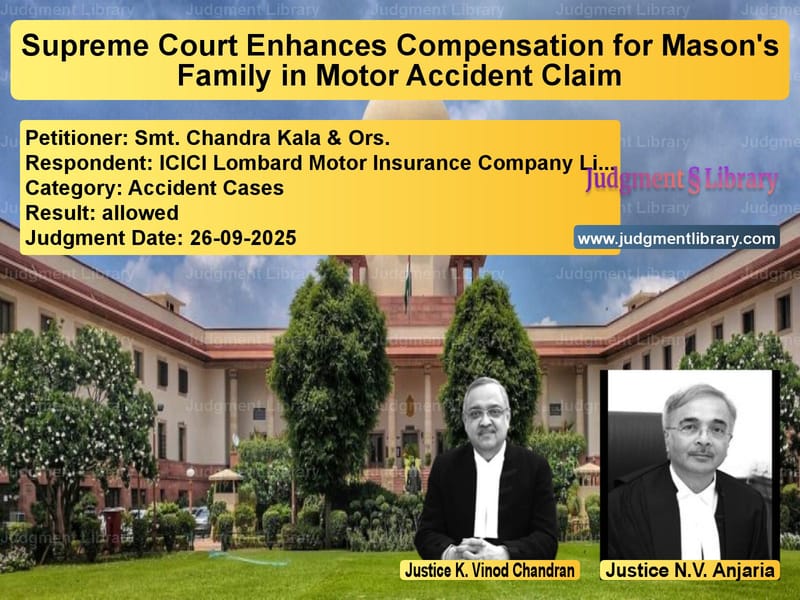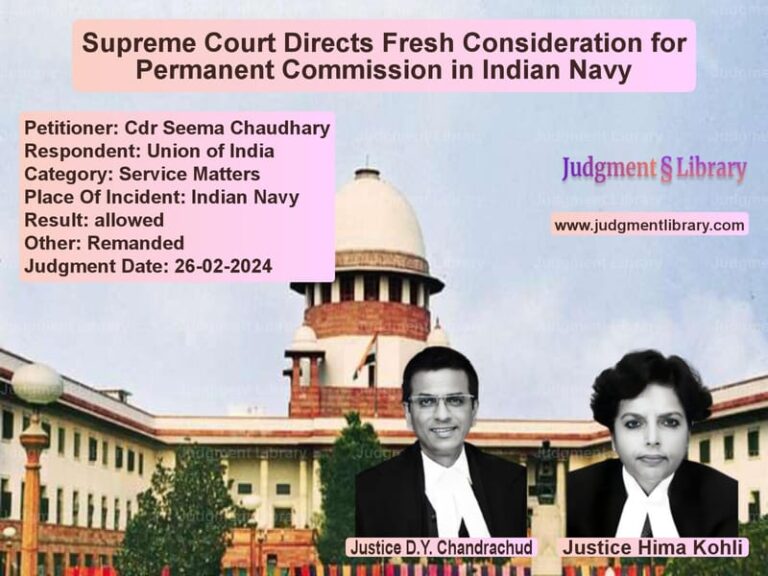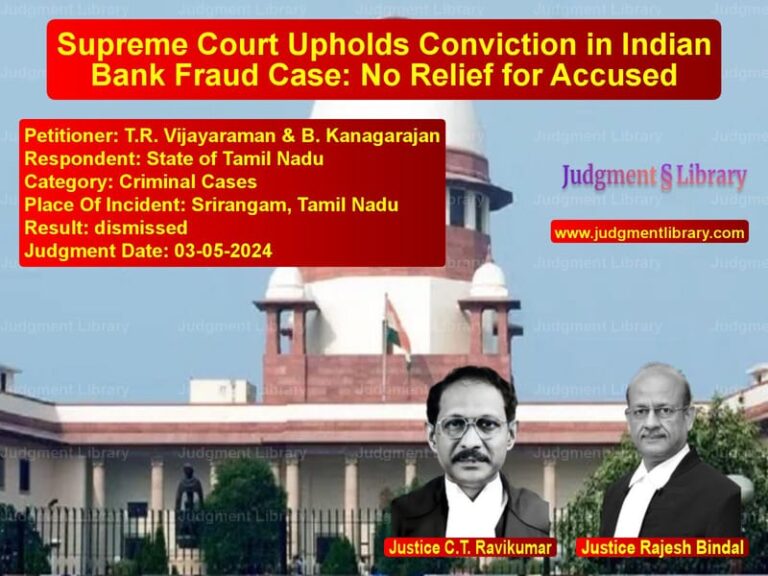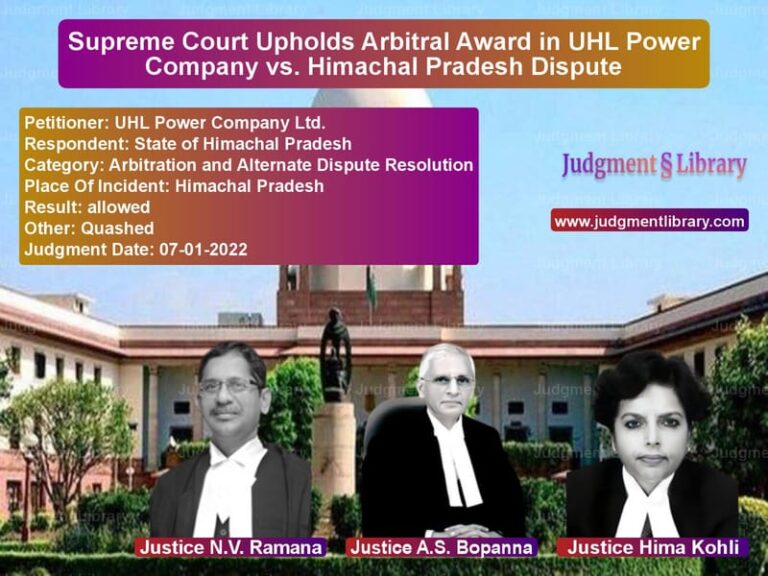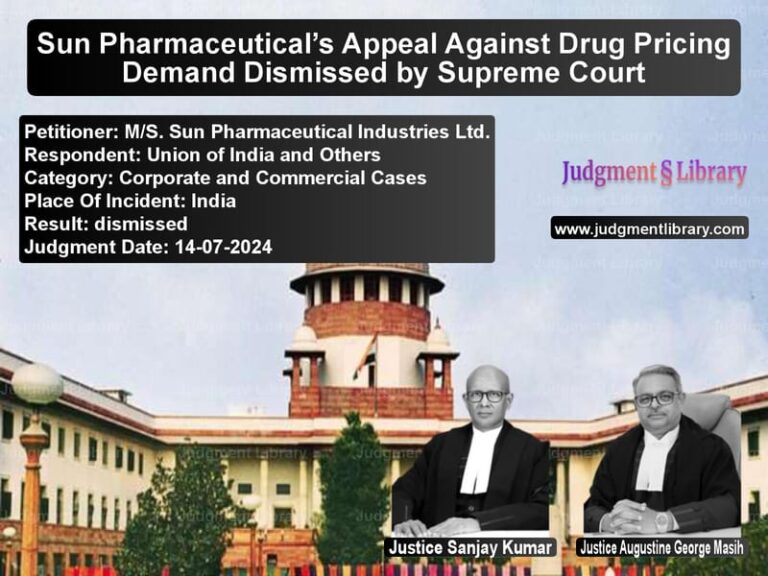Supreme Court Enhances Compensation for Mason’s Family in Motor Accident Claim
In a significant ruling that brings relief to families of accident victims, the Supreme Court has enhanced compensation for the family of a mason who died in a motor accident, setting important precedents for calculating income of daily wage workers and recognizing the rights of all family members to consortium compensation. The judgment, delivered on September 26, 2025, addresses crucial questions about how courts should determine compensation when documentary proof of income is unavailable and expands the understanding of consortium rights beyond just the spouse.
The case involved an appeal by Smt. Chandra Kala and her three minor children against the quantum of compensation awarded for the death of their husband and father, who worked as a mason. The family had contended before the Motor Accident Claims Tribunal that the deceased was earning Rs. 400 per day, but the Tribunal found no documentary proof to support this claim and instead adopted an income of Rs. 189 per day, which represented the accepted daily wage at the time of the accident in 2014. The High Court had confirmed this assessment, leading to the appeal before the Supreme Court.
The Supreme Court bench comprising Justice K. Vinod Chandran and Justice N.V. Anjaria took a progressive approach to the issue of income determination for daily wage workers. The Court noted that “There can be no documentary proof offered for the income of a Mason, who is also a skilled worker.” This recognition of the practical realities faced by informal sector workers marked a significant departure from the rigid requirement of documentary proof that often disadvantages poor families seeking compensation.
In determining the appropriate income, the Court relied on the precedent set in Ramachandrappa vs. Manager, Royal Sundaram Alliance Insurance Company Limited, which had held that a coolie would be entitled to a minimum wage of Rs. 4,500 per month for an accident that occurred in 2004. The Court applied a logical incremental approach, noting that “Considering an incremental increase of Rs.500/- for every year, in 2014, when the accident in the present case occurred even a Coolie would have been entitled to Rs. 9,500/- per month.” Given that a mason is a skilled worker compared to a coolie, the Court found it appropriate to adopt a monthly income of Rs. 9,500 for computation purposes.
The Court approved the High Court’s application of the multiplier method, which used a multiplier of 14 for the 43-year-old deceased, following the principles established in the landmark Pranay Sethi case. The computation included a 25% addition for future prospects and deduction of 1/4th for personal expenses, which the Supreme Court found to be “perfectly in order.”
One of the most significant aspects of the judgment was the Court’s ruling on compensation for loss of consortium. The High Court had awarded Rs. 40,000 for loss of consortium, but the Supreme Court clarified that this amount should be payable to each eligible family member. The Court referenced New India Assurance Company v. Somwati and Ors., which had established that “loss of parental and filial consortium is payable to wife and children at the rate of Rs. 40,000/- each.”
In the present case, the Court noted that “the wife and three minor children of the deceased were before Court claiming compensation for the death of the only breadwinner of their family.” Accordingly, the Court ruled that “All the claimants are entitled to Rs. 40,000/- each for loss of consortium.” This recognition that consortium extends beyond the marital relationship to include the parent-child relationship represents a more comprehensive understanding of family bonds and the impact of losing a family member.
Read also: https://judgmentlibrary.com/supreme-court-enhances-compensation-for-100-disabled-accident-victim/
The Court also awarded Rs. 15,000 each for loss of estate and funeral expenses, bringing the total compensation to Rs. 16,86,250. The detailed breakdown provided by the Court shows the computation: Rs. 14,96,250 for loss of future income, Rs. 1,60,000 for loss of consortium (Rs. 40,000 x 4), Rs. 15,000 for loss of estate, and Rs. 15,000 for funeral expenses.
The Supreme Court directed that the awarded amounts be paid after deducting any amounts already paid, with interest at 6% per annum from the date of application until the date of payment, as originally directed by the Tribunal. The appeals were allowed with the modifications outlined in the judgment.
This judgment is particularly significant for several reasons. First, it acknowledges the practical difficulties faced by families of daily wage workers in providing documentary proof of income. By adopting a realistic approach to income assessment based on established precedents and logical increments, the Court ensures that compensation reflects the true economic loss suffered by the family.
Second, the expansion of consortium rights to include children recognizes that the loss of a parent affects children profoundly and that this loss deserves separate compensation. This approach aligns with modern understanding of family relationships and the multiple dimensions of loss experienced when a family member dies in an accident.
Third, the judgment reinforces the principle that compensation should be adequate to truly compensate the loss, rather than being limited by technical requirements of documentation. This is especially important for marginalized sections of society who may not have access to formal employment records but nevertheless suffer genuine economic loss when their breadwinner dies.
The Supreme Court’s approach in this case demonstrates a sensitive understanding of the realities of informal sector employment and the comprehensive impact of accidental death on families. By enhancing the compensation and recognizing the rights of all affected family members, the Court has ensured that the compensation truly reflects the loss suffered by the mason’s family.
This judgment will likely serve as an important precedent for future motor accident claims involving daily wage workers and skilled laborers in the informal sector. It provides clear guidance on how courts should approach income assessment when documentary proof is unavailable and reaffirms the expansive interpretation of consortium rights that has been developing in recent jurisprudence.
The ruling also highlights the continuing evolution of compensation jurisprudence in India, moving toward a more compassionate and realistic approach that truly serves the purpose of compensation – to restore, as much as money can, the position the family would have been in had the accident not occurred. By considering both the economic and emotional dimensions of loss, the Supreme Court has delivered a judgment that balances legal principles with human compassion.
Petitioner Name: Smt. Chandra Kala & Ors..Respondent Name: ICICI Lombard Motor Insurance Company Limited & Ors..Judgment By: Justice K. Vinod Chandran, Justice N.V. Anjaria.Judgment Date: 26-09-2025.Result: allowed.
Don’t miss out on the full details! Download the complete judgment in PDF format below and gain valuable insights instantly!
Download Judgment: smt.-chandra-kala-&-vs-icici-lombard-motor-supreme-court-of-india-judgment-dated-26-09-2025.pdf
Directly Download Judgment: Directly download this Judgment
See all petitions in Road Accident Cases
See all petitions in Compensation Disputes
See all petitions in Motor Vehicle Act
See all petitions in Insurance Settlements
See all petitions in Third-Party Insurance
See all petitions in Judgment by K. Vinod Chandran
See all petitions in Judgment by N.V. Anjaria
See all petitions in allowed
See all petitions in supreme court of India judgments September 2025
See all petitions in 2025 judgments
See all posts in Accident Cases Category
See all allowed petitions in Accident Cases Category
See all Dismissed petitions in Accident Cases Category
See all partially allowed petitions in Accident Cases Category

